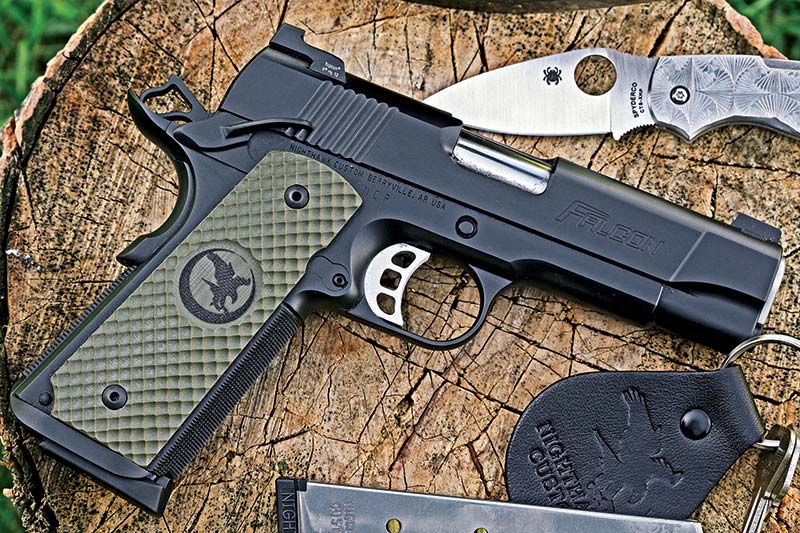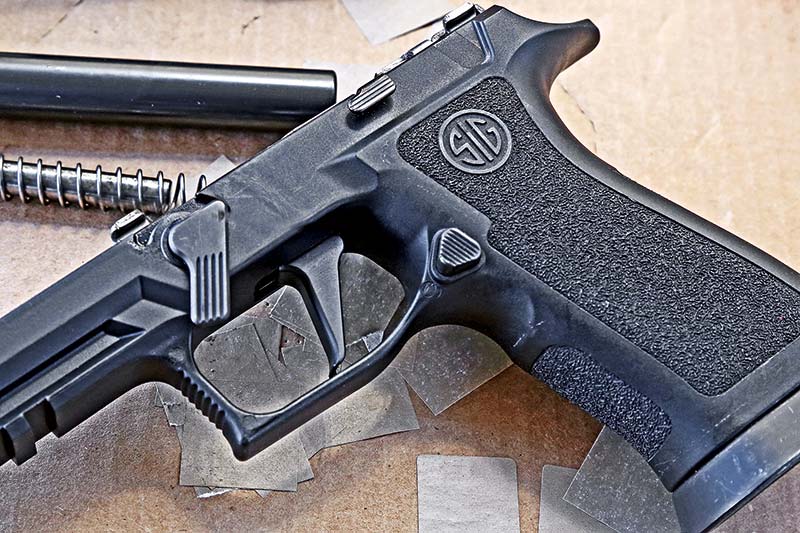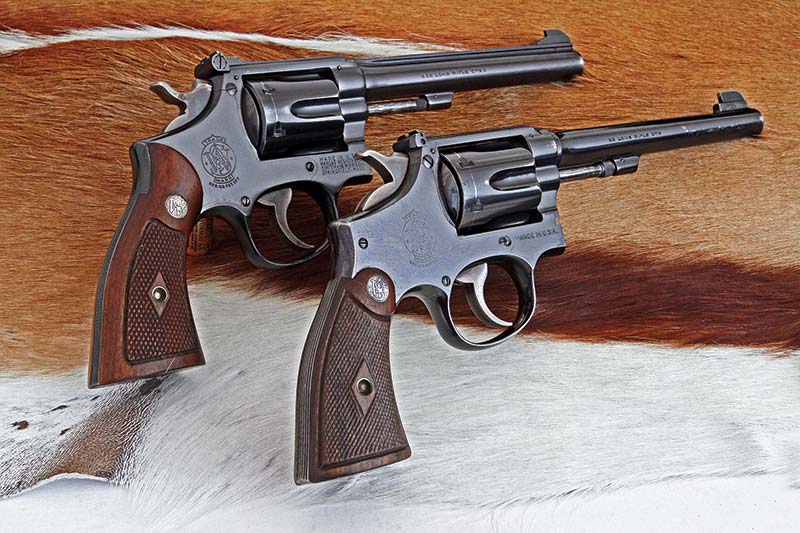The Best Handgun Trigger
This Falcon Commander from Nighthawk Custom has one of the finest trigger breaks Dave’s ever used, and an SA trigger is his choice for a semi-auto.
Most rifle shooters seem to prefer a trigger with a crisp, virtually motionless single stage break. Ideally, the shooter gradually increases pressure on the trigger until, with little or no perceptible movement of the trigger, the sear releases to fire the shot.
Such triggers are also popular with handgunners seeking accuracy above all. Among factory firearms I think no trigger beats a cocked S&W revolver. I never found a better training handgun than an S&W K-22. Single-action revolvers such as the Ruger Single Six usually have decent pulls, though the large hammer with its long rotation does add to lock time.
Nearly as good are single-action semiautos. The best target pistols such as the S&W 41 have outstanding triggers. Many current 1911-style pistols have acceptable pulls right out of the box. The reason I rate them second to a cocked revolver is the fact there’s usually more trigger movement, both takeup and over-travel.
A third type of trigger action is the style made popular by GLOCK. I’m not sure what to call it. GLOCK uses the term “Safe Action” which is a registered trademark and can only be used in conjunction with GLOCK pistols. For purposes of this article I’ll use the term Modern Double Action, or MDA.
The MDA has several virtues. It provides the same pull for every shot, unlike a traditional DA first shot semi-automatic. Trigger movement is longer than a cocked revolver or SA semiauto, but considerably less than with a DA revolver. By changing springs, weights of pull can be changed to suit personal preferences. My experience has been there’s a bit more of a learning curve to achieve accuracy with the MDA but it certainly can be done.
Aftermarket parts for popular handguns let the shooter choose a trigger style and pull to suit their needs. This is a Bruce Gray flat trigger with around 3½ lb. weight of pull on a SIG SAUER P320.
Faster?
Likewise, it’s possible to achieve a high degree of accuracy using the DA pull of a revolver if you’re willing to put in the time and effort. Back when revolvers ruled in bullseye competition, a competitor would occasionally try double-action, especially for the rapid-fire stages. Most eventually concluded it wasn’t worth the effort.
So far we have considered only accuracy. But accuracy is not the only consideration; speed of fire is also important. Here the cocked S&W revolver with its splendid crisp pull loses its luster. It worked — barely — in bullseye rapid fire, in which rapid fire means five shots in 10 seconds. I’ve seen top competitors using 1911’s fire 12 shots, all A-zone hits at seven yards, in well under four seconds — with a reload after the first six shots.
For fast shooting, I think the SA semiauto is easiest to learn, but I’ve seen absolutely amazing speed shooting done with DA and MDA triggers as well.
Combining speed and accuracy, my ranking order in quality of shooting would be: SA semiauto, MDA semiauto, DA revolver or semiauto then single-action revolver. But there’s a third factor. A personal defense handgun is a threat management tool. Statistically, in most defensive situations simply producing the handgun is enough; the threat either surrenders or retreats with no shots fired. We must be concerned about unintentional discharge, even under the extreme stress of a life-threatening situation.
Ideally it shouldn’t matter. It’s the shooter’s responsibility to put in whatever time and effort it takes to handle the firearm safely at all times. And yet the stress of a true life-threatening situation is pretty hard to replicate. I think a fairly heavy trigger pull with a long range of trigger movement is not such a bad idea on a defensive firearm. Now the rating would be: DA revolver or DAO semiauto; modern double action; SA semiauto and single-action (cocked) revolver. Add it up — speed, accuracy and usability under great stress, and it’s easy to see why the modern DA pull has become so popular.
Top is an early 1950s model K-22, below is a pre-war K-22. Dave doesn’t know of any better gun to get a new handgun shooter started.
Fixing Things
Many handgun enthusiasts go through a stage of modifying or changing parts on their firearms, sometimes for no better reason than parts are available. I’m as guilty as anyone, but eventually got over it. While I don’t believe in swapping parts willy-nilly, if you really are dissatisfied with your trigger there may be solutions available. Perhaps you want a lighter pull, faster reset, shorter trigger travel or a flat trigger piece.
Go online to Brownells’ web site and search “handgun triggers.” You’ll find many quality replacement triggers for popular handgun makes and models, all in one location for easy comparison of features and prices. Companies like Agency Arms and Apex Tactical to Zev Technologies, are represented. Others include CMC, Dlask, Fulcrum, Fusion, Grieder, Gun Craft, Lone Wolf, Overwatch, Powder River Precision, Velocity, Volquartsen, Wilson Combat — and I’m sure I missed some.
For more info: www.brownells.com, Ph: (800) 741-0015








